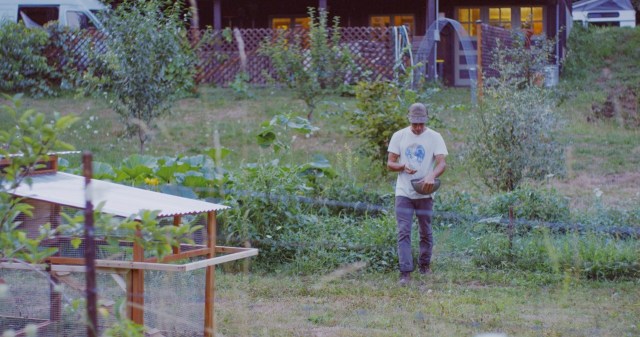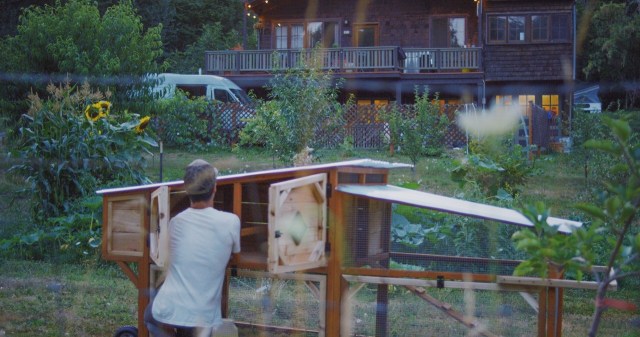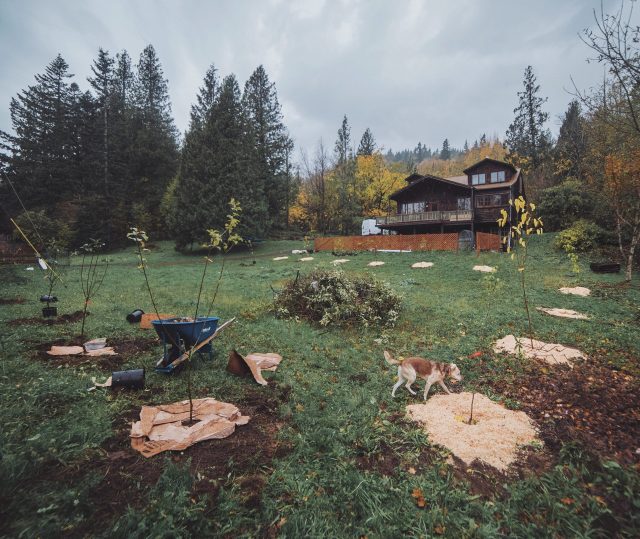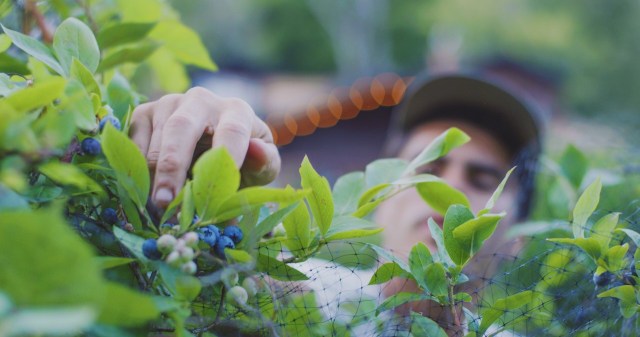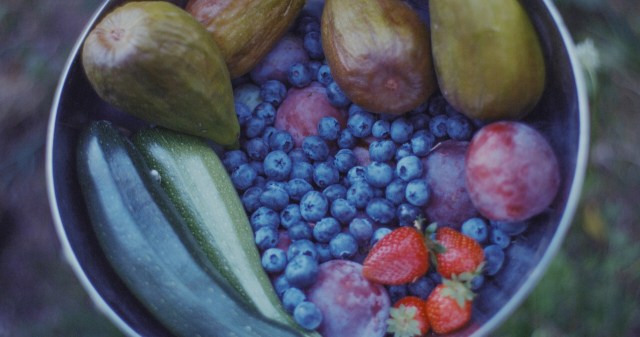In 1917, at the start of the United States’ involvement in World War I, President Woodrow Wilson told Americans how they could contribute to the war effort: Plant a garden. There was a food crisis in Europe, and America needed to export as much food as possible to its allies. Which meant that the task of feeding Americans fell to every citizen, by planting food in any container or plot of land they had, sites that were quickly coined “Victory Gardens.” In World War II, victory gardens resurged, as food was diverted to the military overseas.
Americans have a history of growing their own food in times of crisis, and with coronavirus assaulting the American economy and threatening supply chains, the idea of resilience gardening is experiencing a comeback. Nurseries, considered an “essential business” because of their ability to support agriculture, have been overrun with customers seeking vegetable seedlings and soil, and in some cases have completely sold out of their edible selection.
There are a handful of prominent surfers who have long been extolling the practice of growing your own food. Paige Alms, Hank Gaskell, Fergal Smith, Lex Weinstein, Mark Healey, and Cyrus Sutton are a few in the surf community who, in their own backyards, in groups they’ve founded, or even on small-scale farms, have committed themselves to growing food: for their own health, to lessen their environmental impact, or — as is most pertinent to current events — to wean themselves off a system that can become vulnerable in times of crisis.
Filmmaker and surfer Cyrus Sutton has been publicly sharing his practice of living more sustainably since 2009, when he founded Korduroy, a platform of videos and blogs on everything from how to start worm composting bins to how to make a handplane. Sutton moved from North County San Diego to rural Skamania County in Washington State 5 years ago, to live on 4 acres of land, grow food, and learn from a community of self-reliant individuals. We called him up this week to talk about growing food and how surfers can plant their own modern-day victory gardens in the face of a global crisis and system shakeup.
Sutton on his 4-acre property in rural Washington.
How long have you been growing food? How did you get started?
I’m by no means an expert, just someone who’s had the good fortune of spending time with a lot of people who do. My journey started with my dad. He taught organic gardening in the ‘70s in San Diego and became a landscape architect as a way to have a career around his passion. We always had this big garden in the back of our suburban lot where my dad would grow a bunch of stuff. I’d help my dad on jobs to make money as a kid. I moved down to North County San Diego in my early 20s and started a company called UGrow Organics with surfboard shaper Jake Moss.
What motivated you to start Korduroy and how did it tie into growing food?
Jake and I were dorking around with making and installing garden boxes and Ryan Burch was my neighbor. It was Ryan’s experimental surf shapes and my and Jake’s gardening stuff that started Korduroy. My friends and I were living cheap and growing and scavenging food so we could work less, stay healthy and surf more. Korduroy was a platform all about making surfing culture affordable and accessible to people in a place that was becoming more expensive to live.
Sutton’s garden in Encinitas, which originated from a desire to healthily sustain himself in the face of Southern California’s rising cost of living.
Is there a natural connection between surfers and growing food? Are surfers especially well equipped to connect to the land?
From what I’ve seen, for the most part surfers are not connected to growing their own food. Today our surf culture is about escapism from a society that we assume will provide our basic needs. But historically there has been a connection. Native Hawaiians and Peruvians are two unique pioneering surf cultures. They laid the groundwork for surf culture and they were able to do so because they had their food systems so dialed in that they could devote time to playing in the ocean instead of growing food. In Hawaii, a well-known methodology was their ahupua’a system, a mountaintop-to-ocean way of nutrient cycling, created from the necessity of utilizing finite resources on an island. The Peruvians also had advanced agricultural systems. Their efficiencies allowed them to untether themselves from all-day work to supply their caloric needs, and allowed them to recreate and express themselves.
When did resiliency and food security start to influence your thoughts about growing food?
I remember there was this power outage in San Diego, it wasn’t even for a day. I went down to my local market and there was a line wrapping halfway around the block. Only one person was being let in at a time, cash only. I just started thinking about how dependent Southern California is on outside resources and how easily that could be compromised. That day set a lot of things in motion. I wanted to use existing systems but not take them granted, and not assume that things were going to be provided.
In your films and your social media, you often reference permaculture. What draws you to that?
Permaculture is an umbrella term for creating sustainable human cultures by synthesizing indigenous wisdom with new technology. It encompasses small-scale gardening, regenerative agriculture, natural building, community development, and habitat restoration. Permaculture introduced me to ecological design, where you can grow food efficiently in terms of time, energy and resources by mimicking natural ecosystems. This appealed to me because I’m not a full-time farmer — I have a business of my own while being a full-time employee, and I travel for work. So learning how to design a system based on my local environment, that has abundance of food for wildlife and myself, is important. It’s not clean and great looking on camera, but it works.
How has the coronavirus pandemic influenced your thinking about gardening and food security?
I’m upping my game, with nowhere to go and summer around the corner, I just got two goats and five chickens. I need to be able to look at how much money I spend a month on food and how much of that I can grow and consume from this land.
In light of a global pandemic, Sutton is further investing in his and his community’s food security.
So it sounds like you’re saying growing food is becoming more attractive right now not only because of grocery store shelves getting emptied, but also because of the economic instability we’re facing.
Access to healthy food, food that’s going to make us stronger, is going to become increasingly expensive. We’ve seen that. The Covid thing, for me, is just a symptom of a deeper problem in our society. If something like this grinds our society to a halt to the extent that it is, I think this is a warning, and it’s making me increasingly want to go down this path.
What tips do you have for people looking to grow some of their own food?
I’ve always been told, buy your calories and grow your nutrition. Calories are really cheap, you can get organic rice and beans at a way higher energetic and monetary ROI buying them than growing them. But all of the nutritional things like high-quality medicinal and culinary herbs, greens, chickens, eggs, it can be cheaper to grow them, and soon it definitely will be cheaper. Where I live it, it already is. Here you just plant things in the ground and it grows. It rains enough that you don’t have to water much. You plant a young fruit tree, you don’t have to add anything to the soil, it just grows. It’s a different cost benefit up here, but that’s why I’m up here.
Planting mulberry, apple, pear, peach, apricot, and plum trees on Sutton’s property.
So for people who aren’t in such an easy growing climate, how should they get started?
Look at growing things which are low maintenance and expensive to buy in stores, and focus on perennials, which don’t need to be replanted every year. They may go dormant during winter months but they’ll produce food year after year if cared for. An herb garden is a great place to start — mint, rosemary, thyme — they’re really expensive at the market but easy to grow in small spaces. Many have medicinal properties and help boost immunity.
Fruit trees are the next step. Once established, they provide food year after year with minimal maintenance. Citrus trees can grow well in pots. Avocado trees are great to invest in, as they’re super high-calorie and grow really well where a lot of surfers live.
Berries are incredible. They provide a lot of bang for your buck and are super expensive to buy at the store. I grew up with Olallieberries, my dad just built a trellis, ran string down for the vine to grow up on, and those provided so many berries for the end of summer.
Sutton recommends starting with perennial plants, which continue to yield food year after year.
Then you have your leafy greens, which need to be replanted if you don’t let them seed. Arugula, kale, bok choy, and chard are easy to grow and hardy. The biggest thing is just picking hardy plants. There are plants that are really high maintenance, but these plants are total badasses in terms of being able to convert whatever they have into edible biomass.
For containers, egg cartons are great for starting seeds. A variety of upcycled plastic containers will work for full-grown plants. Just puncture drain holes at the bottom to prevent root rot. If you want to grow on top of existing lawn, just lay cardboard right on top of the lawn, puncture it a bit, and add soil on top of that. The cardboard creates a weed barrier and eventually decomposes, so you can grow on top of your lawn without having to dig up the sod, and the sod eventually becomes compost for the roots of the plants you’re growing.
Then you can build on by adding a water catchment system, where you catch rainwater off your roof by tapping into your gutter’s downspout, and use it for watering your plants. The Ecology Center has a good installation kit for that. And you can turn kitchen scraps into future soil by composting, which creates nutrients for your plants.
You can also forage, there are so many edible things around us we can eat. Purslane is my favorite and grows like a weed. Miner’s lettuce. Dandelion greens. Weeds’ function in an ecosystem is to be dynamic accumulators, so they accumulate minerals. It’s just a matter of picking them in areas that aren’t compromised environmentally, so don’t pick things near roadsides or industrial areas. But in fields you can get a bunch of nutrition. Start by just looking around.
Herbs, berries, fruit trees hardy vegetables are easy to grow, even in containers.
What are some good learning resources for those who want to learn more?
We are republishing and creating new how-to Korduroy videos right now. Masanobu Fukuoka’s book called “One Straw Revolution” is a really good primer is a really good primer to opening our minds to what gardening can be. Same with “Braiding Sweetgrass” by Robin Wall Kimmerer. “Gaia’s Garden” by Toby Hemenway has a lot of plant guilds that work for California.
A lot of college extension programs have Master Gardener courses, where you can go deep and learn botany, composting, integrated pest management, etc. UC Santa Cruz has a really good one, and there are online classes you can find too. But the best thing — after the shutdown — is just go volunteer at a local farm, go helpout, get your hands in the soil and experience it all for yourself.
After social distancing is no longer required, how can we help each other grow food?
In Hawaii, there’s a strong permablitzing community [Permablitzing involves a cooperative of people who take turns helping each other start gardens in their yards. You have to volunteer at three other permablitzes before the group will permablitz your yard.] In Southern California, the Ecology Center is a great resource. Lex Weinstein runs Sea and Soil meetups once a month in Encinitas. Everyone goes for a surf and then volunteers at a nearby farm. But really, just connect with any small scale farm in your area.
If mainstream surf culture is largely detached from the natural systems on which it depends, do you think the current pandemic is a moment for a cultural shift?
It’s an individual decision, but I do think these times are a symptom of more to come. This is a great wakeup call to look at the systems we’ve developed complacency around and dependency on, and the assumption we’ve made that the systems that allow us to surf will always be there.
A few years ago, I was surfing with Geoff Lawton, a well-known permaculture educator, in Byron Bay and he told me that the beautiful thing surfers possess is pattern recognition. We can subconsciously read the horizon, anticipate undulations and make the right adjustments. Every surf break is a microclimate, it’s its own unique alchemy of wind, bathymetry, swell. We can look at the landscape around us the same way. I think the best thing we can do is take that gift of subconscious literacy and apply it to what’s around us.
Original Post from this site
